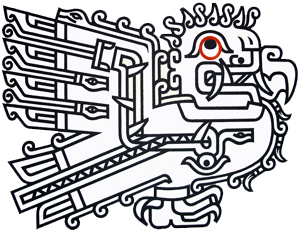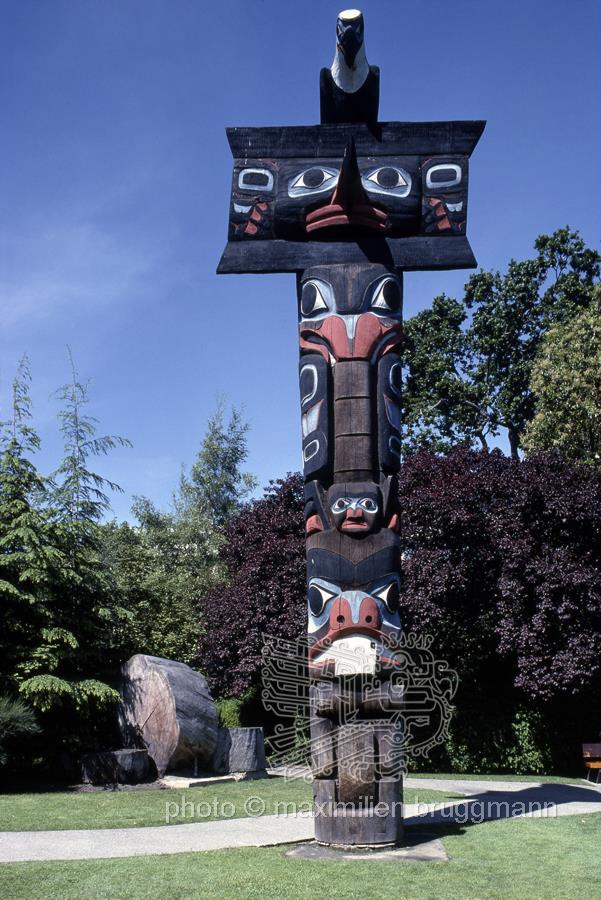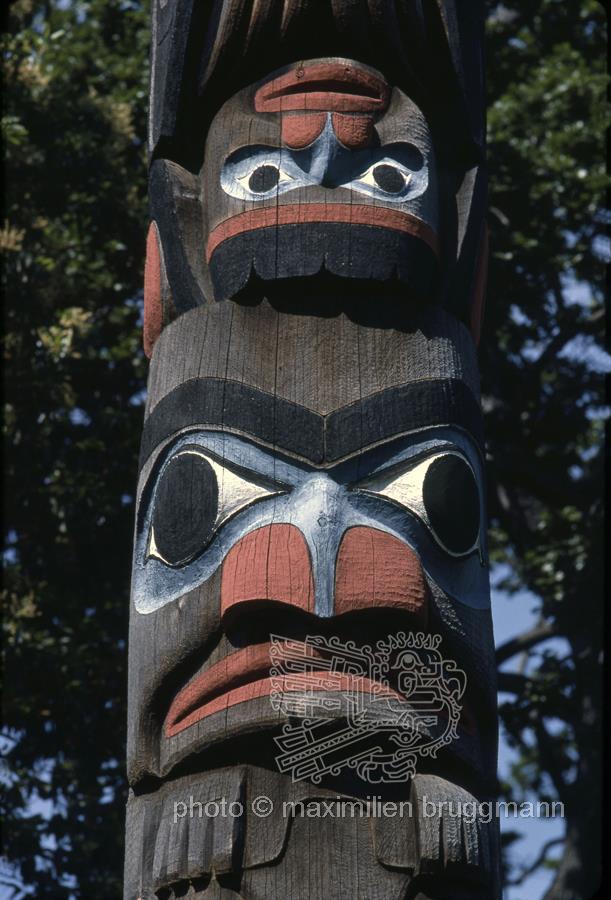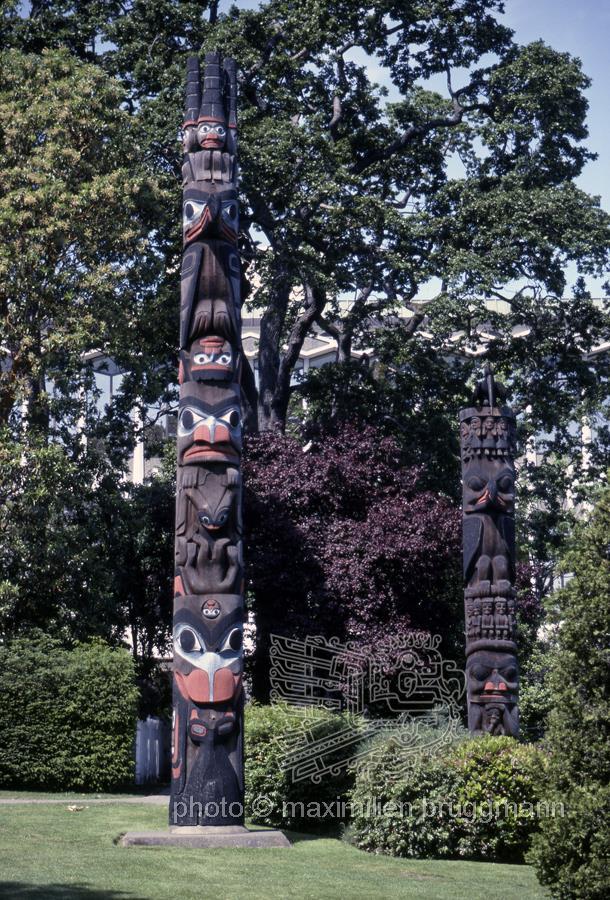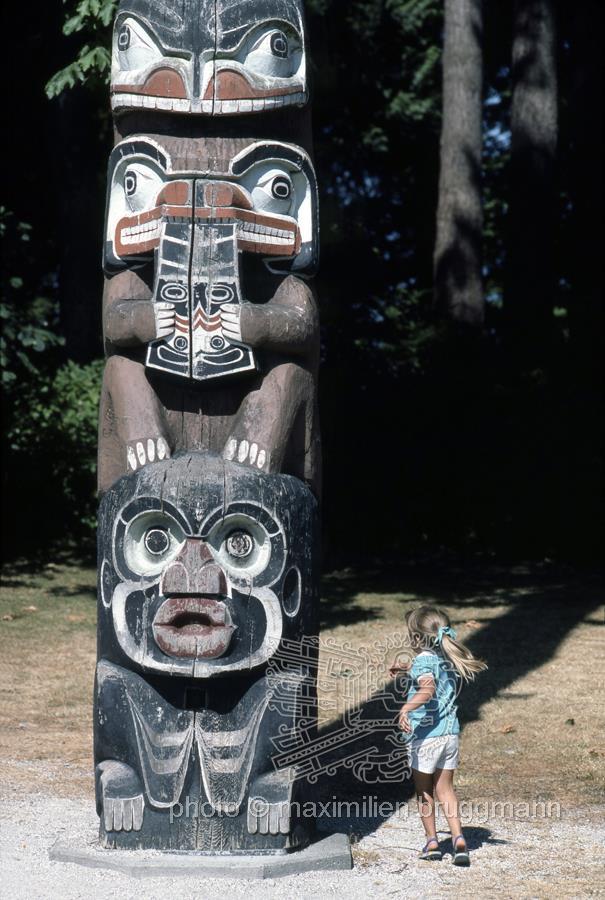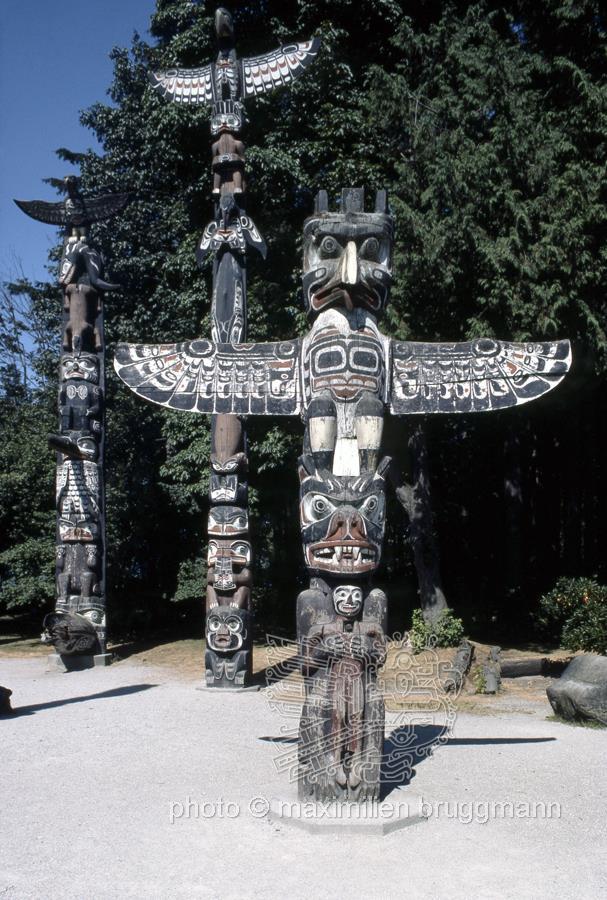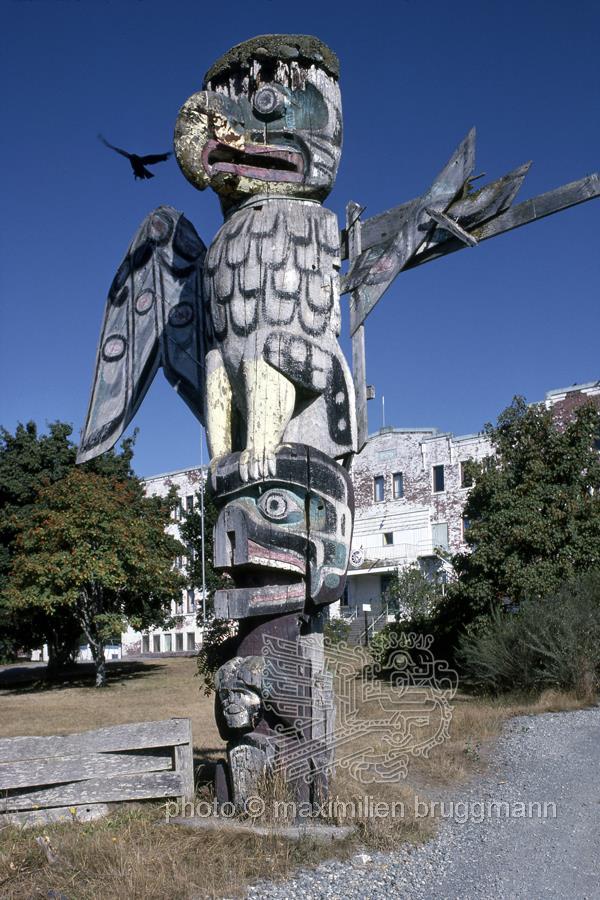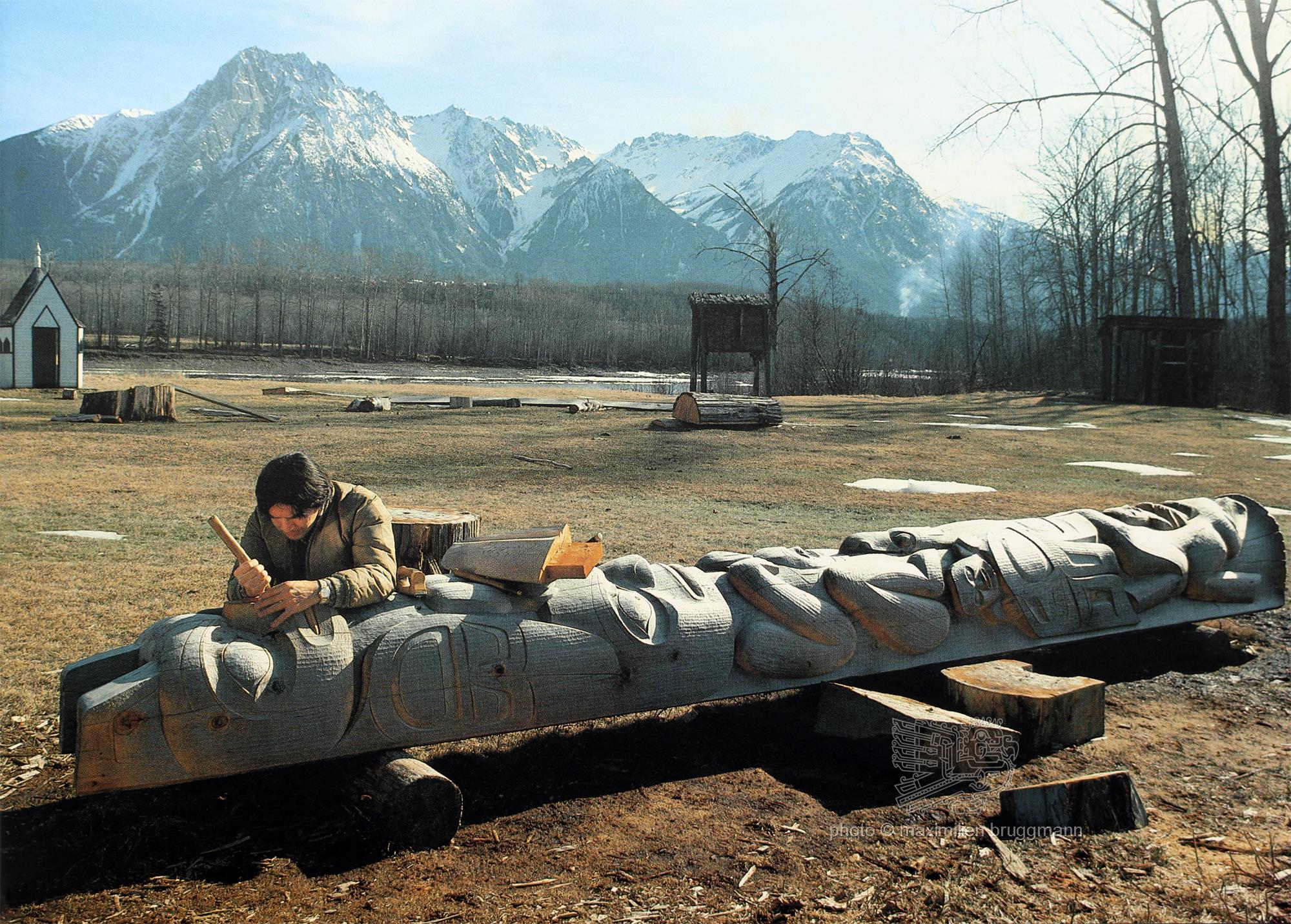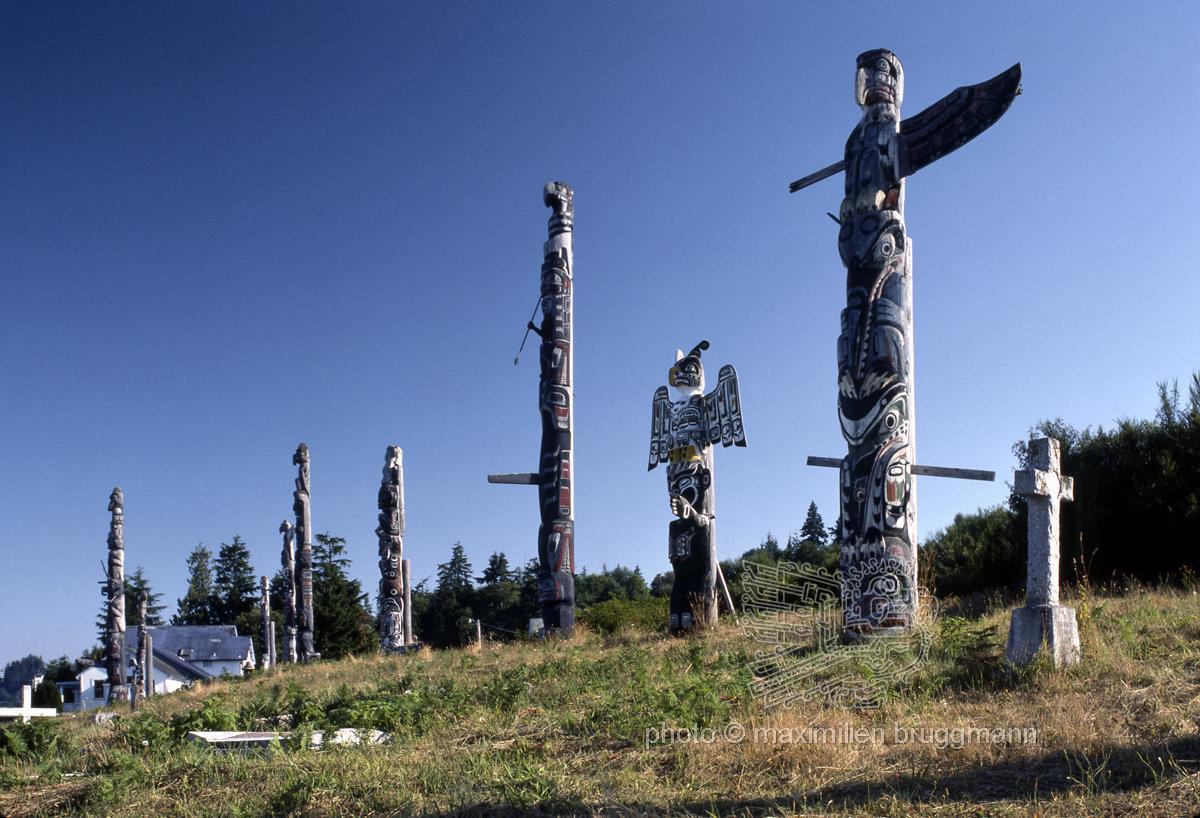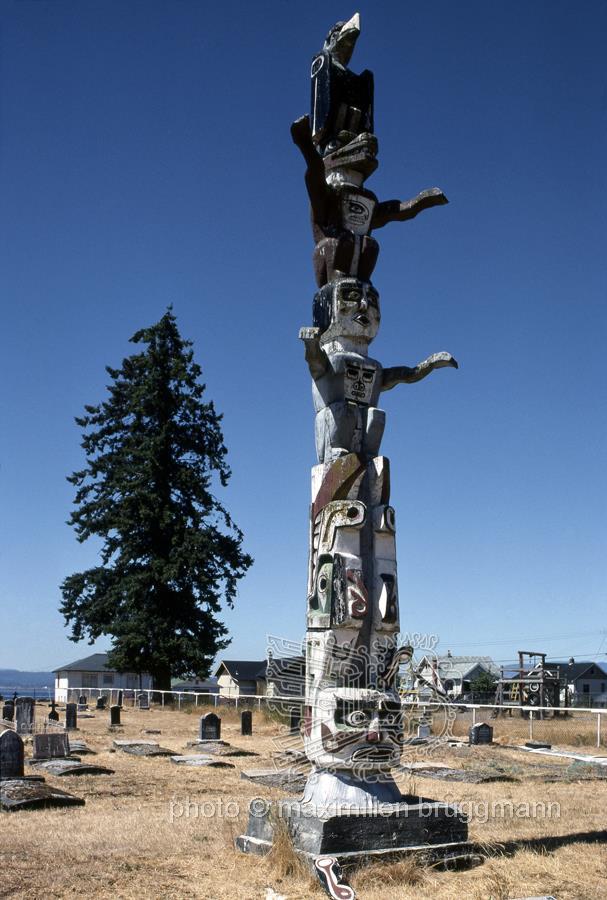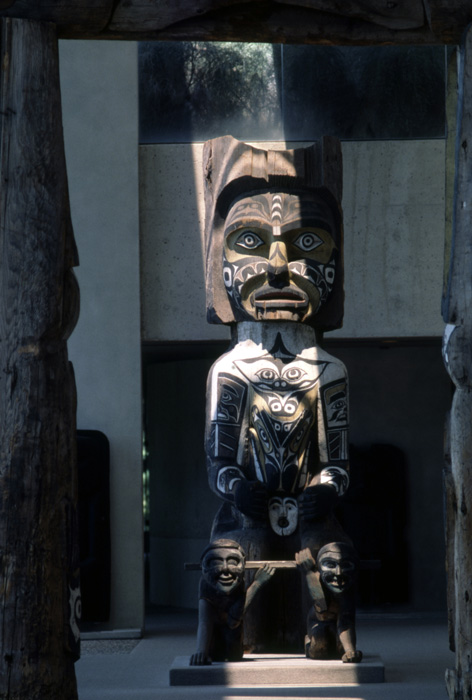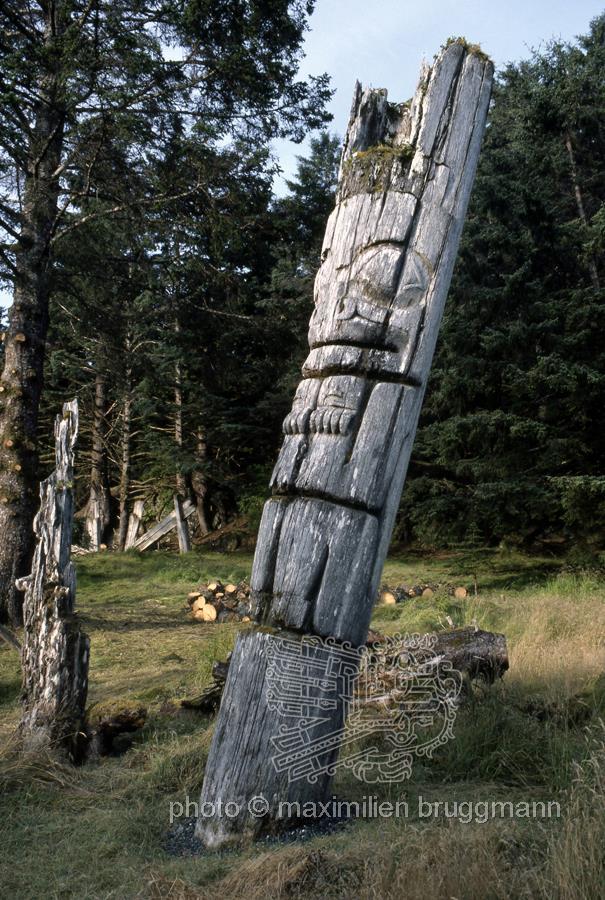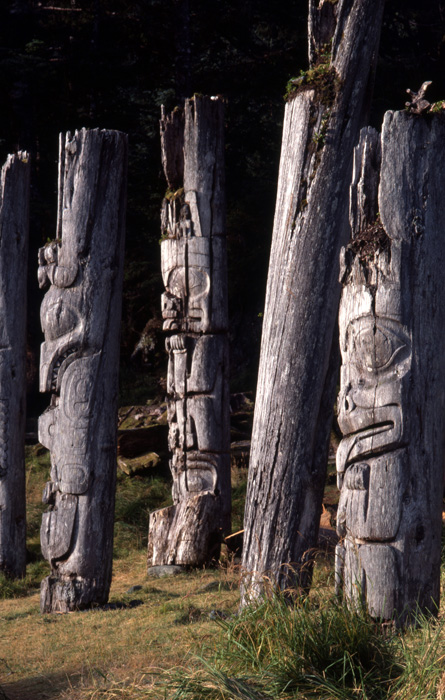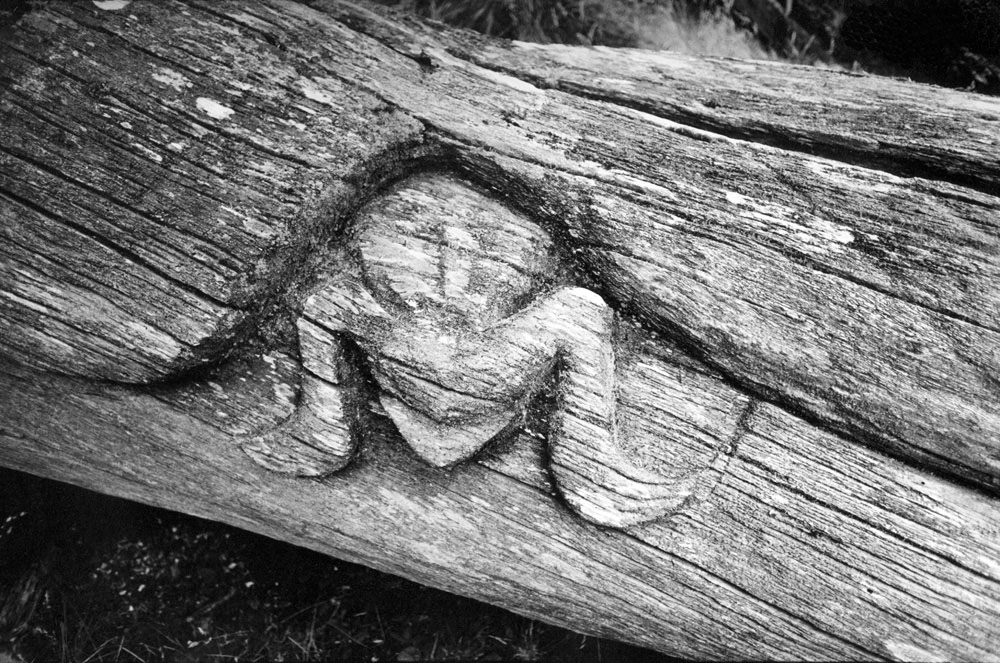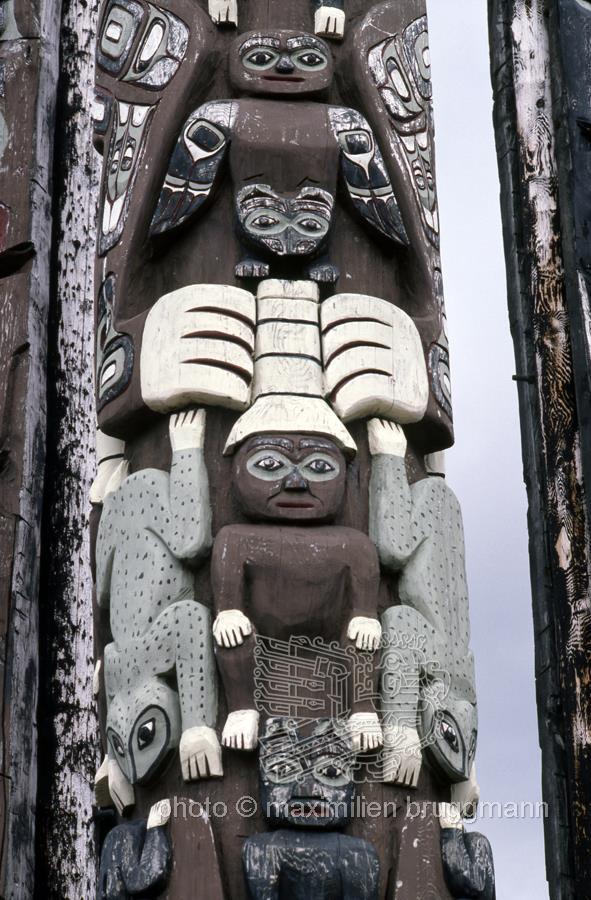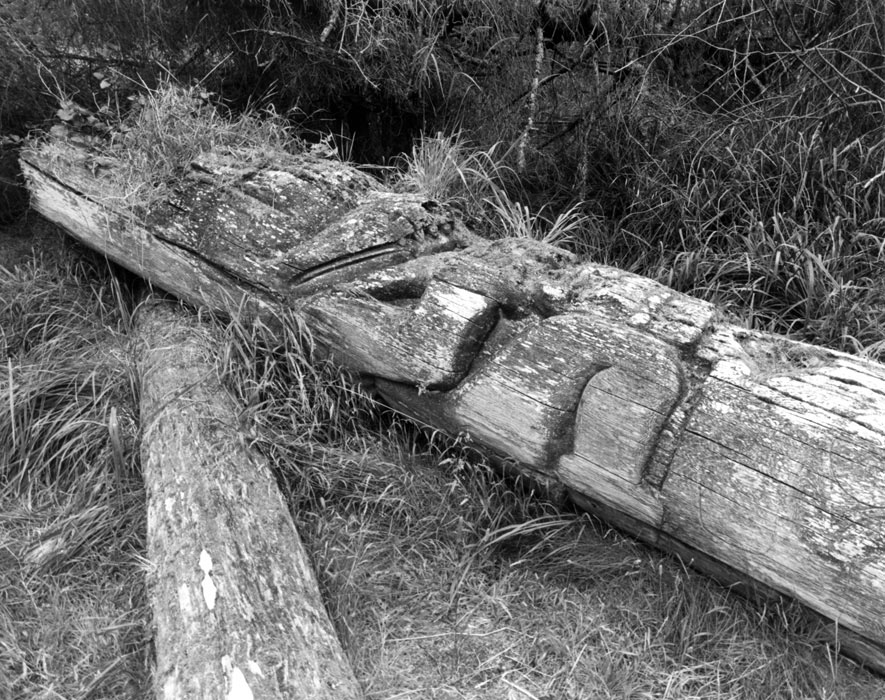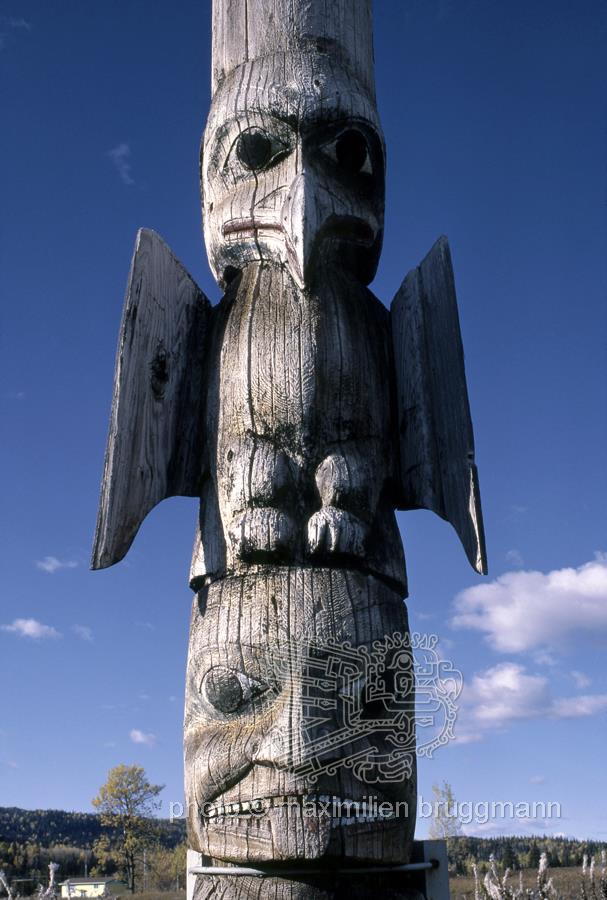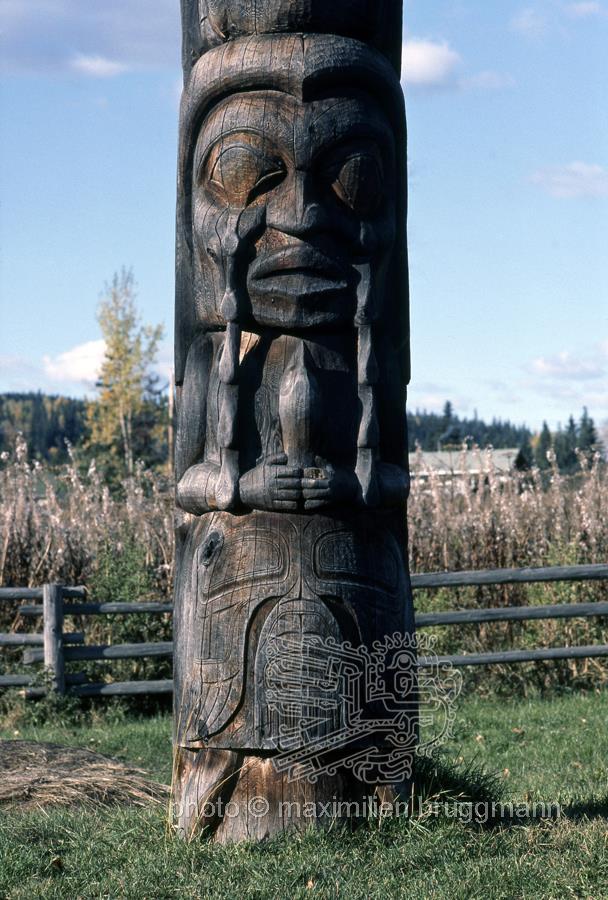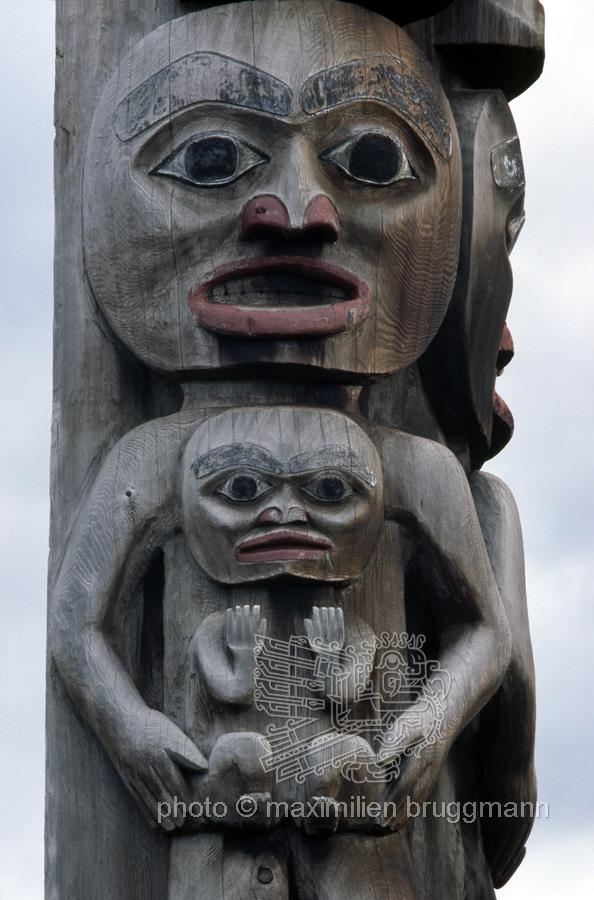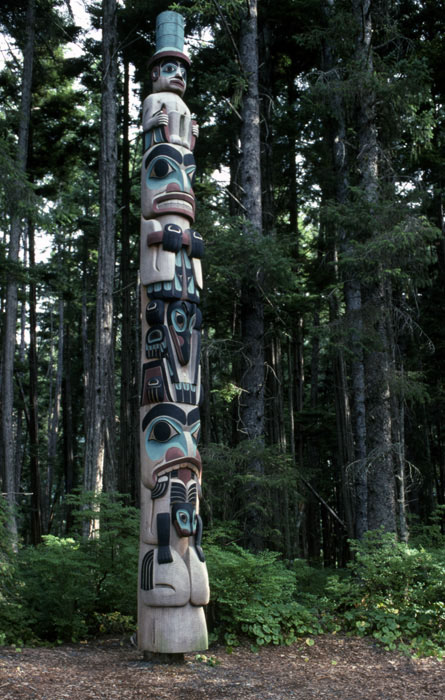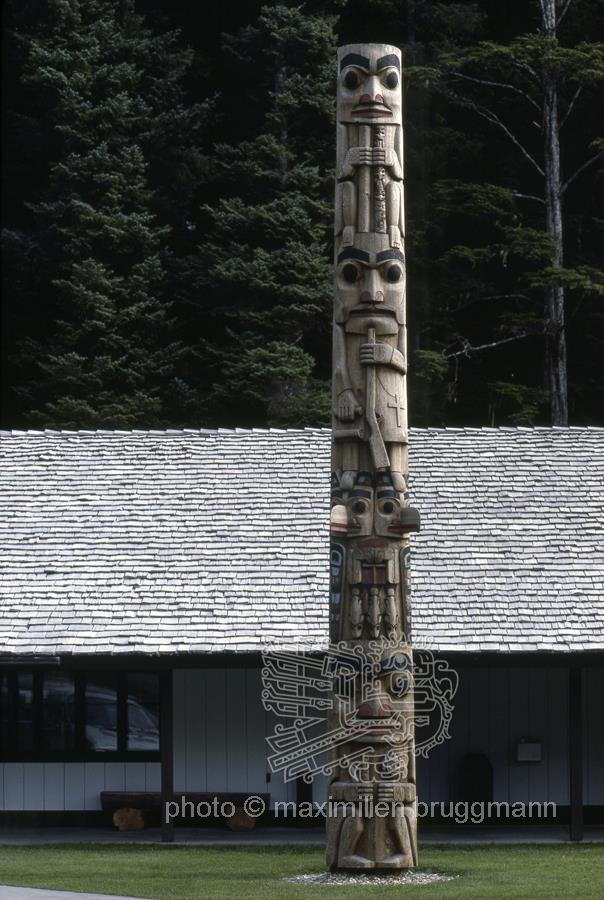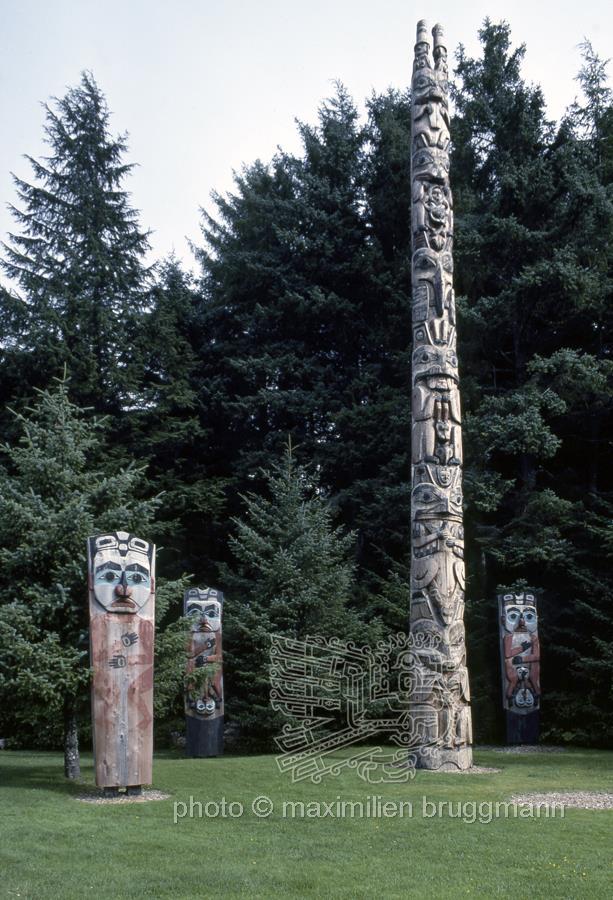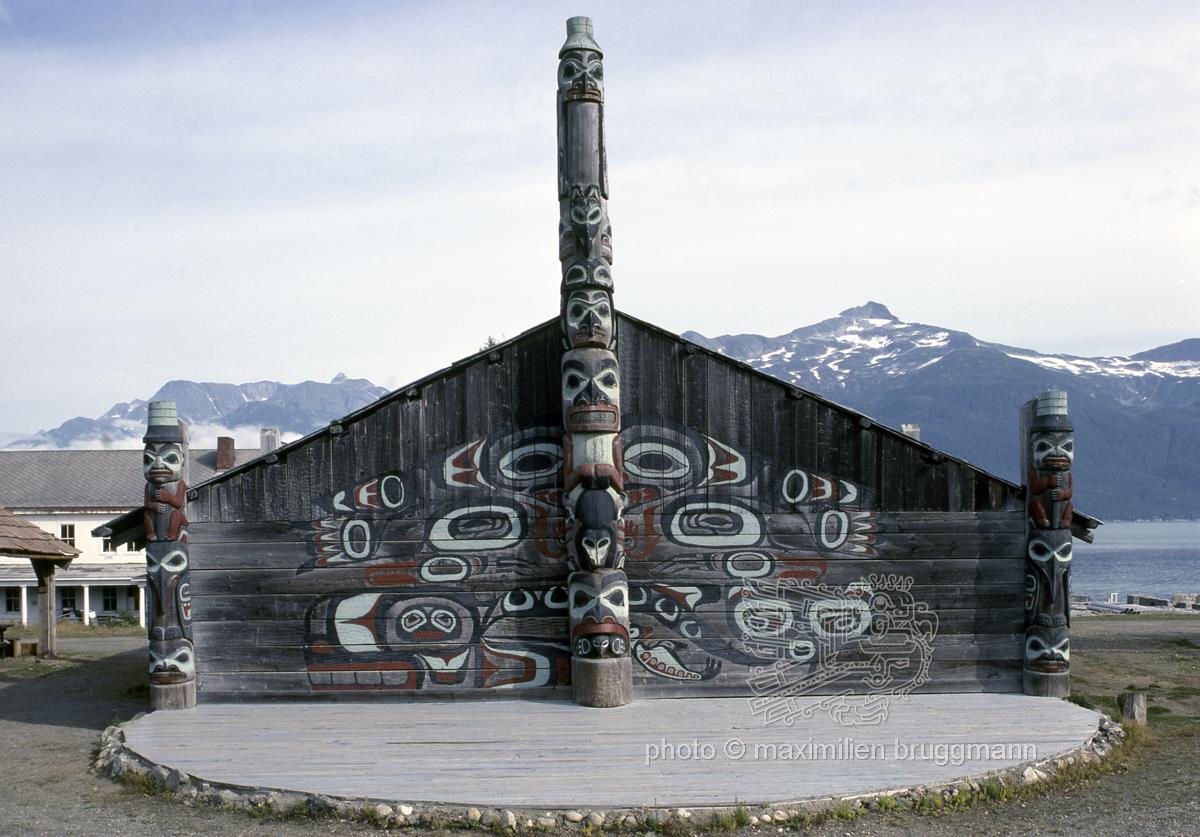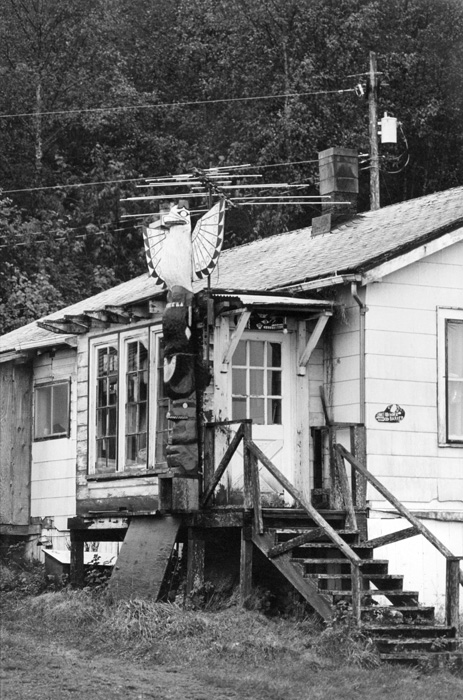Totem poles are often used to depict stories of ancestors, animals, mythical beings or important events. They represent both the genealogy of a family or clan and their spiritual connection with nature.
A totem pole can also symbolise the status or power of a particular family or clan. The figures depicted on the totem pole are often associated with specific legends and ancestors that represent the clan or family.
There are different types of totem poles, including cult totems (for ceremonies), house totems (for families or clans) and welcome poles (as a sign of hospitality and recognition).
The making of a totem pole is a complex artistic process that was traditionally carried out by skilled carvers. These carvers often had years of training and knowledge that was passed down from generation to generation. The totem pole is not only a work of art, but also an important historical and cultural document of the respective community.
The photos were taken in 1985.
